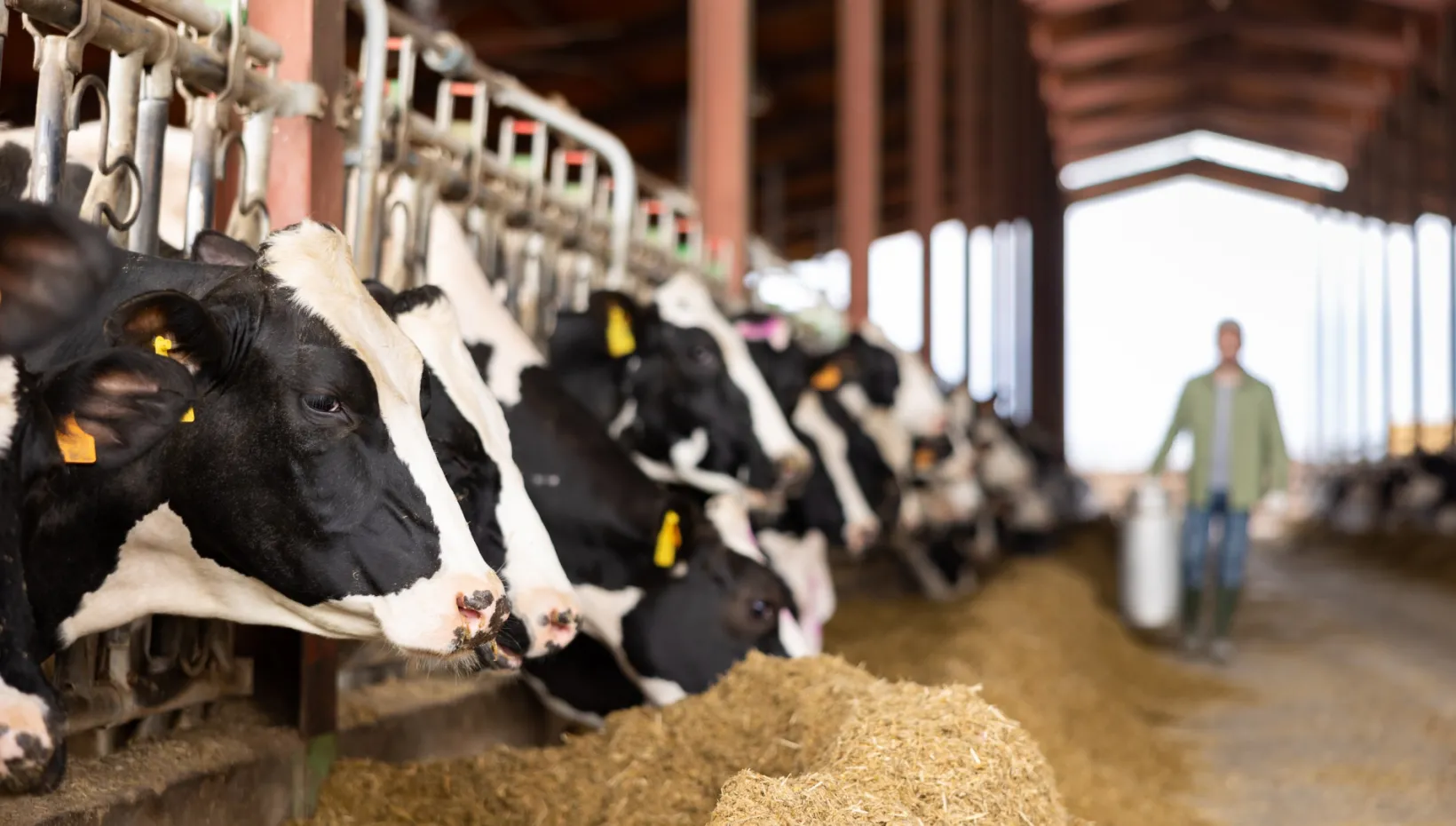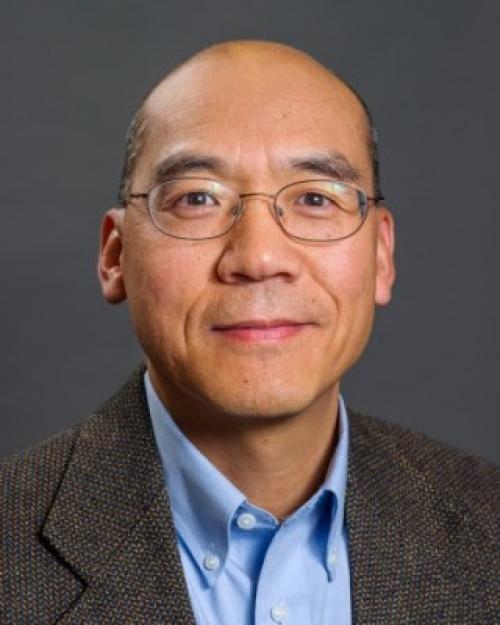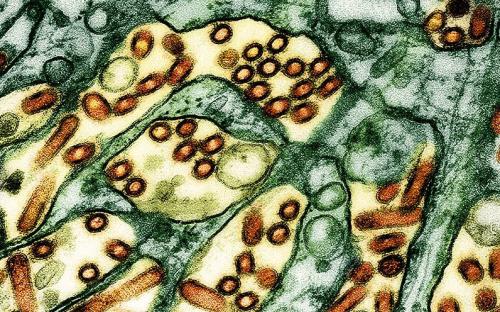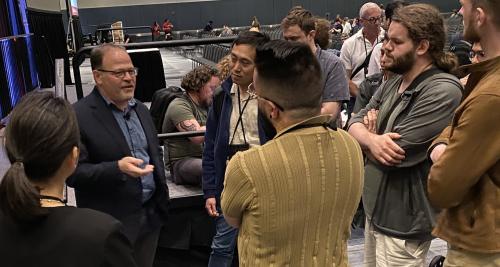Spreading the word about virology research in an age of misinformation

Article by: Emily Caldwell
Originally Published
The American Society for Virology’s 43rd annual meeting hosted by The Ohio State University this week features some firsts for the organization: It is the largest meeting ever, attracting over 2,000 attendees from 50 countries, and the keynote speaker was a social scientist – rather than a specialist in a biological or medical field.
Adam Berinsky, the Mitsui Professor of Political Science at MIT, opened the meeting Monday night with a lecture about misinformation – and ways to combat it. He has studied the problem in the context of politics, but the work is easily adapted to virology in an age of heightened anti-science sentiment and lack of trust in experts of all kinds.
ASV President Anne Moscona, who selected the keynote speaker, urged audience members to consider working alongside Berinsky to address misinformation that casts doubt on scientific evidence, which she called “a problem so worrisome to our community.”
Ohio State expertise
Shan-Lu Liu, a virology professor at Ohio State and co-director of the Viruses and Emerging Pathogens Program of the Infectious Diseases Institute, chaired the meeting’s organizing committee. Liu, a longtime HIV researcher who more recently has led numerous studies of SARS-CoV-2 variants’ immune evasion, transmissibility and infectivity, has been named president-elect of ASV at this year’s meeting and will become president of the society in 2025.
The conference blends symposium presentations by leaders in a range of virology disciplines with poster sessions and dozens of trainee workshops on science, career development and communication.
Linda Saif, Distinguished University Professor in Ohio State’s Center for Food Animal Health with faculty appointments in animal sciences and veterinary preventive medicine, opened Wednesday morning’s symposium with detailed documentation of coronaviruses’ ability to spill over from animals to humans – which has been happening for centuries. An international expert on coronaviruses, Saif described the wily strains as diverse infectious agents that are skilled at accommodating change thanks their large RNA genome.
Like the coronavirus that leapt from wild animals to cattle and from cattle to poultry that Saif’s lab was the first to document in 1995, the virus that causes COVID-19 is known to infect mink, hamsters, cats and white-tailed deer. She’s among a team of researchers who found that white-tailed deer were infected by humans with SARS-CoV-2 across Ohio and that the animals function as reservoirs promoting ongoing viral mutation.
“If we end up with a wildlife reservoir, will it persist, adapt and mutate in wildlife with new variants going back to humans, livestock or other animals?” Saif said. “The concern is, will we end up with a scenario with SARS-CoV-2 where we have two-way transmission to wildlife species and back into humans?”
The World Health Organization has predicted the next pandemic will be caused by what it calls “Disease X” – and some coronaviruses currently circulating in animals are potential candidates, she said.
The studies detecting SARS-CoV-2 in Ohio deer were co-led by Andrew Bowman, professor of veterinary preventive medicine at Ohio State, who presented an update on that research program at the meeting. Bowman has also led influenza surveillance at the swine-human interface in commercial settings and agricultural fairs for years, and recently made news by finding H5N1 (bird flu) viral RNA in over a third of commercial milk products he and a graduate student bought in the Midwest based on a hunch that viruses detected in dairy cows were making their way to grocery stores.
The annual conference presents “an important opportunity to educate the public about virology research,” said Liu, also associate director of the Center for Retrovirus Research and professor of veterinary biosciences. “And we expect that attendees will also benefit from Adam Berinsky’s insights about the general phenomenon of misinformation.”
Fighting misinformation
Misinformation that circulated during the COVID-19 pandemic lockdown – conspiracy theories that the illness’ severity was exaggerated or that the virus was deliberately released for sinister reasons – persists to this day. Berinsky, who has extensively studied Americans’ beliefs in false political rumors (such as claims Barack Obama wasn’t born in the United States), has found that rumors are “sticky” – countering them is not just about sharing the facts, but requires a messenger that people will be willing to trust.
His research has found that about 70% of people will endorse at least one false rumor when given a list to choose from and only 30% of people reject them all, and that misinformation correction should focus primarily on reaching the undecideds – people who aren’t sure about what’s true. His work has also shown that correcting misinformation is not a “one-and-done” endeavor – it requires repeated messaging as well as a series of strategies targeting people who share fake information online.
Working with Facebook and Google, Berinsky and colleagues advanced interventions encouraging people through “accuracy nudges” to think before they share information – advising users to evaluate information before sharing it and investigate its sources – or even asking them how important it is to them to share only accurate information.
“Most people don’t want to share bad information,” he said. “We want to remind them of this.”
They found in experiments that at the individual level, these nudges turned the knob toward more sharing of true information. Though the prompts won’t stop people who are posting lies maliciously, the added “friction” makes it a little more difficult for casual users to do an easy thing that has negative effects.
A megastudy of nine interventions designed to reduce online sharing of misinformation revealed that all of them work – but each one’s effect is relatively small, on the order of 2 to 3 percentage points. Hence, the frame of mind in combating misinformation should not be a search for a single solution, but deployment of the best bundle of solutions depending on the context.
“There’s been this long search for a magic bullet. It doesn’t exist,” Berinsky said. “But don’t give up on the enterprise.”


